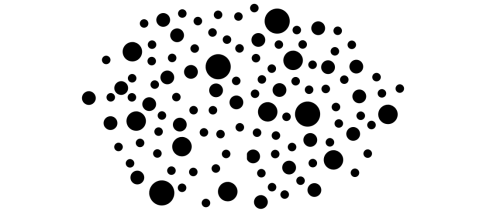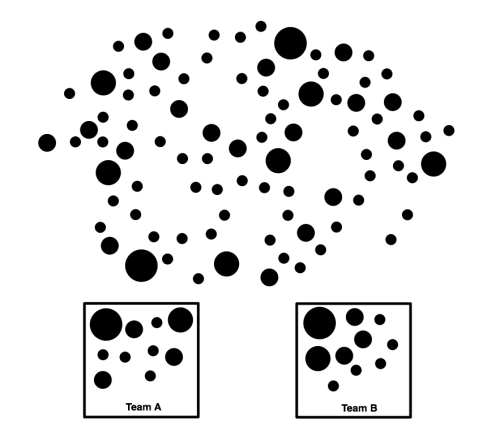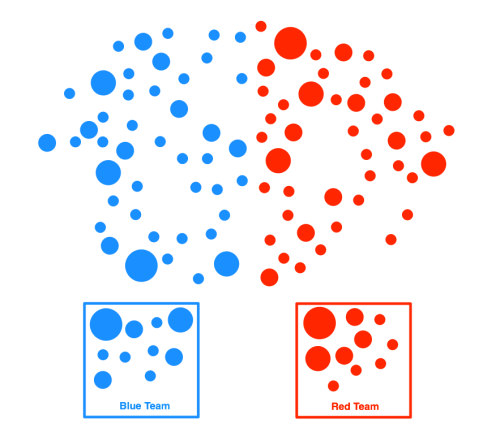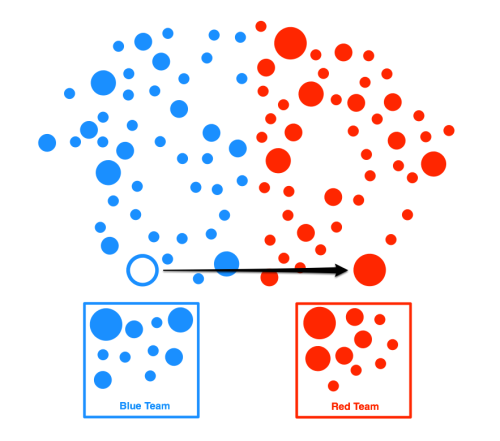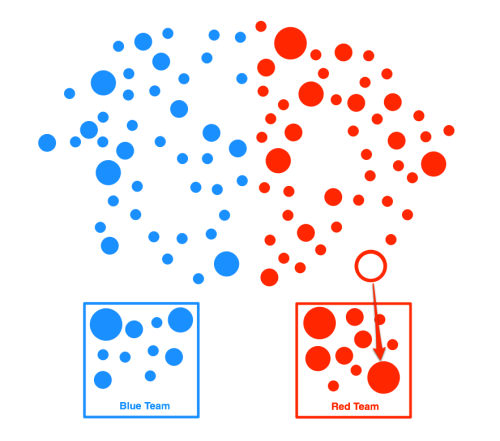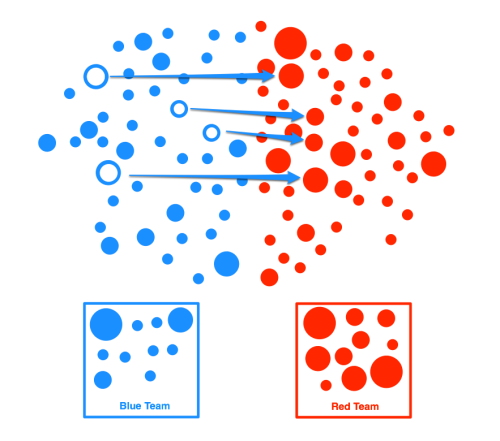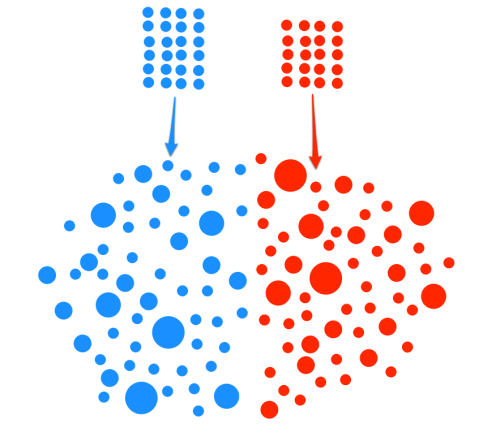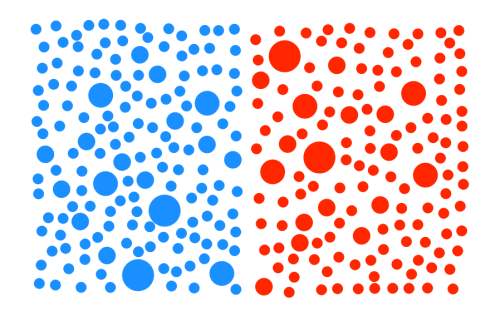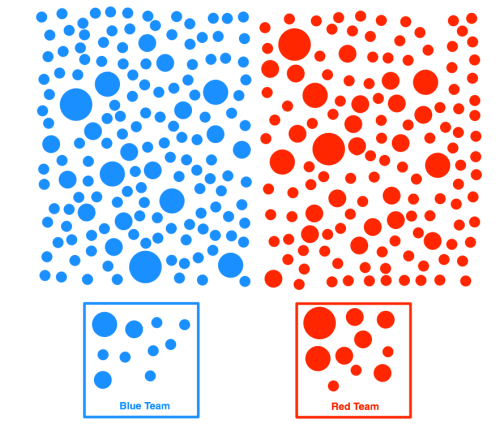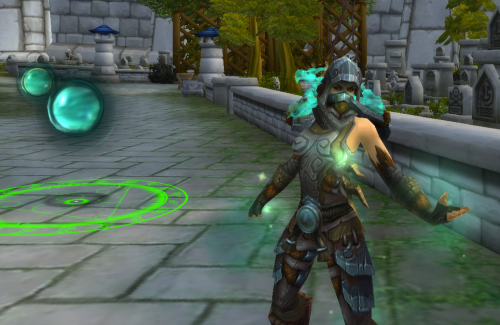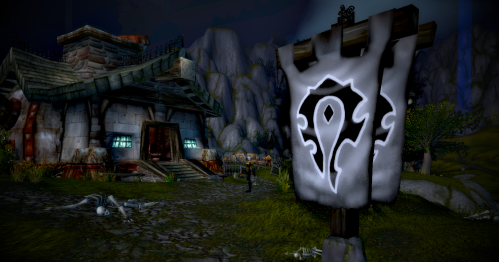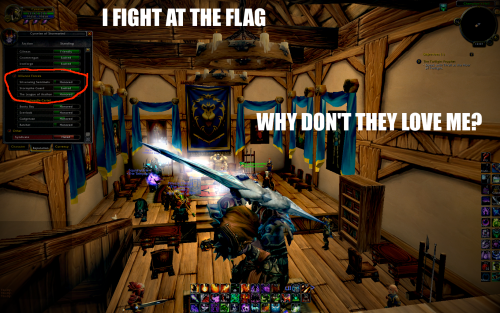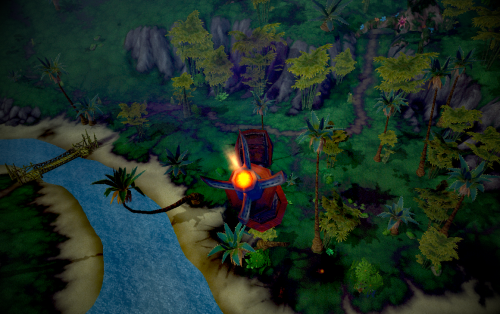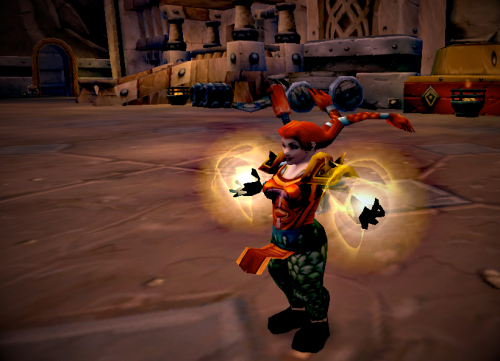The fantasy of Warcraft battlegrounds is that there are two relatively equal sides to the conflict. This isn’t just a fantasy that is pushed thematically, through lore and storytelling. This is an idea that is promulgated through the structure of random battlegrounds themselves, through the random queue mechanism that promises a similar experience to all players, no matter what faction their characters are.
However, this fantasy is false. It’s not false because of story or lore, but rather because of the interplay between three factors: 1) experience and gear providing advantages in PvP, 2) the random matchmaking mechanic itself, and 3) the separation of the pool of players into two teams.
Under the current system, faction imbalance in random battlegrounds is inevitable and leads to negative player experiences on both sides.
Let’s look at why.
THE IDEAL SYSTEM
The core idea of random matchmaking for games is: given a large enough pool of players and a large enough number of games, any given match will be equal. You should have approximately the same ratio of inexperienced to experienced players on each team, an equal distribution of gear. The goal is to allow individual performance to dictate the outcome.
In an ideal world, it looks like this:
The above picture represents the overall pool of players for random matches.
The first factor that we have to account for is that gear (on a character) and experience (of a player) both influence the success of a game. Gear is a fundamental aspect of World of Warcraft that affects a character’s ability, and in PvP it is acquired through experience. I’ve represented the combination of player experience and character gear through the relative size of the dots above – the larger the dot, the more influence that player can exert through a combination of experience and gear.
The random battleground mechanic is the next component to consider. At any given time, a group will be drawn from these pools of potential players.
When the system is at equilibrium, the queue times on both sides will be the same and the total area of all dots selected will be equal. Some flux is expected due to random selection of players, but over time the result should be solid queues and a 50/50 split in wins.
At this point we have the ideal state of random matchmaking.
Now let’s introduce faction into the population.
Now there are two pools. There’s limited fluidity between the pool – a player can choose to take their dot and go to the other side, either by rerolling (with a smaller dot) or faction changing (with the same size dot) – but that’s limited by the barriers of time (leveling) or money (faction change fees). So we’ll assume resistance to change within the pools unless there’s a reason to change.
Ideally, faction shouldn’t matter. But by splitting the source population in two, it creates a situation where not only is equilibrium impossible to achieve, it becomes something players rationally choose to avoid, creating bad experiences on both teams.
INTRODUCING IMBALANCE TO THE SYSTEM
The key to making the above system work is that the two pools that feed the teams in matches need to be equal. Any imbalance between the two affects the teams in a match, which in turn introduces a feedback loop into the population pools. Over time, small imbalances become magnified until the system stops working.
I’m going to assume just two things here.
1) The perception of an imbalance is more influential than the actual imbalance. Players only respond to imbalances that they perceive, through experience or communication with other players.
2) Experienced players are more likely to respond to imbalances than novice players. New players have not yet been exposed to the imbalance, and the chance that a player will respond to an imbalance increases over time.
Let’s start off with a simple case: the perception that one faction is better at PvP.
CASE 1: THEY’RE THE BETTER TEAM
It doesn’t matter how this idea originates. This could be through an early legitimate imbalance in a smaller population. It could be through a bad sample. It could be through some vocal members of the community repeating it. It doesn’t matter if the seed is real or not – all that matters is that players believe it.
If one faction is perceived to be better than the other, we should observe a slight shift of experienced players to that side.
Once this happens, a feedback loop starts with the matchmaking algorithm.
What might have started as a rumor now has evidence behind it, as the matches skew slightly in one team’s favor. As players grow in experience, they slowly react to this imbalance rationally.
The players on the losing team evaluate their performance over time and consider that maybe the other faction is better. Their experience is that they lose more than normal, that the other team just does a better job. The pressure to investigate the other side increases.
The players on the winning team feel far less pressure to change sides. Matches become progressively easier as more and more big dots join their pool. Why stop when you’re winning?
Queue times are also affected in this scenario. One side will have a larger pool of interested players than the other, resulting in long wait times for the perceived ‘better’ faction, and nearly instant queues for the ‘weaker’ faction. This amplifies the feedback loop and introduces the negative experience to the stronger faction.
Long wait times but higher chance to win, or fast queues for a probable defeat? Those are the choices you have when one faction is perceived to be better than the other.
CASE 2: THE STREAMS THAT FEED THE POOL
Let’s go back to our original state of equilibrium and look at a different variable – new players.
Player population is never static over time – people pick up and put down Warcraft all the time. A certain amount of churn – loss of experienced players – is expected within the pools as players either stop participating in PvP or stop playing Warcraft entirely. Churn is offset by new players joining the pool, either new subscribers or experienced players who are trying PvP for the first time.
So here’s another assumption: dots of all sizes can drop out of the pool, but only small dots join the pool.
Because of the gear structure and scaling present in instanced PvP, no player can start out as a really big dot. They might be a great player with experience in the class, but even with the best heroic raid gear the character will be undergeared for PvP. Best case: an experienced player with great PvE gear tries PVP and enters as a medium dot. That’s pretty rare, so we’ll assume only small dots enter the pool.
In a state of equilibrium each faction will have equivalent churn and growth rates, resulting in equal-sized pools. If one side churns or grows faster, imbalance will be introduced.
Let’s say that one side is slightly more popular than the other. Not popular in PvP, but overall more popular with the entire player base.
Over time, one pool will get bigger than the other – but not necessarily any better. The ratio of small dots to big dots is maintained over time as players improve and gear up. As long as the flow is consistent, equilibrium is not disturbed by overall faction imbalance. That’s great!
But what about when you have events which disrupt that flow?
The more popular side finds itself at a temporary disadvantage. More small dots entered their pool than the the other side, yet there hasn’t been any time for them to mature into big dots. The numerator of big dots hasn’t changed, while the denominator of little dots has gotten bigger.
Ironically, an influx of undergeared toons affects the more popular faction more adversely than the unpopular faction. Team quality declines on the popular faction, causing more losses. More losses means more churn as new and old players alike get frustrated.
Conversely, the unpopular faction weathers the influx better and their small dots grow and mature in a victorious environment. The popular side has a double whammy of initial frustration with their teammates followed by better-geared opponents.
And that brings us back to Case 1’s feedback loop.
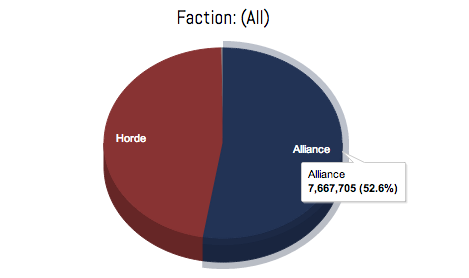 I’ll just leave this here with a note that undergeared, inexperienced boosted level 90s are about the smallest dots you can represent on these graphs.
I’ll just leave this here with a note that undergeared, inexperienced boosted level 90s are about the smallest dots you can represent on these graphs.
CASE 3: BETTER GEAR
World of Warcraft is a game of gear acquisition. Even with the experiments with uniform gear scaling in Mists of Pandaria (Challenge Modes, Proving Grounds), there’s no indication that random PvP will move to an entirely uniform set of gear across players.
So what happens when one side has an advantage in gear acquisition?
PvP gear is generally acquired through three methods: crafting, honor points, and conquest points. Everyone has access to crafted gear, honor gear is available through both random and non-random BGs, and conquest is available from random BGs and rated PvP play.
There’s no immediate faction advantage with the above gearing strategy, especially not from a state of equilibrium. If everyone starts off equal, with the same access to gearing opportunities, there won’t be a problem. But as soon as a problem is introduced, the gear system throws another wrench into the works.
The key is the rewards for winning a random battleground.
Over time, the faction which dominates the random BG queue will acquire more Honor and Conquest than the side which does not. Rated play is essentially factionless, as is crafting – so those two methods are effectively a wash. But control of the random BG reward allows that subset of players who don’t do much rated play to gear up faster than their opponents.
In the dot model I’m working with here, the really big dots get big at the same rate no matter what, but the small and medium dots grow into bigger dots at a faster rate, causing a feedback loop independent of faction changes.
In the North American servers, we see an additional layer of complexity to this problem. Alliance PvPers dominate only the two largest BGs – AV and IoC. Horde dominates the random queues. Alliance PvPers therefore queue specifically for those two BGs (and ONLY those two) so they can gain some honor with a victory, and those BGs reward a lot of honor anyways. The Horde is able to queue for random BGs specifically excluding those two maps, therefore ensuring both that they’ll both gain better gear faster and that the Alliance will continue to dominate those maps. The only reason to venture into AV or IoC as NA Horde is for achievements.
My understanding is that the situation is reversed in the EU, but ultimately it doesn’t matter which side is on top. Both sides suffer because of the feedback loops introduced by gearing strategies.
I should note that the current PvP gear system at endgame is an improvement over previous seasons and twink brackets, when individual items could enter imperfectly into a faction and tip the balance quickly. The level 85 twink bracket experienced an influx of 3 Lute of the Sun-Kings from the BMAH in 5.2, causing a dramatic increase in the relative power of the side which possessed them. This, in turn, caused the opposing team’s twinks to abandon the bracket, which destroyed the competitiveness of the bracket.
I mention the fate of that bracket only as a cautionary tale.
SOLVING THE PROBLEM
There are a few different ways to address the imbalances caused by faction in random BG matchmaking. Some work better than others.
1) Remove gear as a factor entirely. This leaves experience as the only determining factor between teams. It reduces the impact of new players joining, but doesn’t address the perceived imbalance between factions, which is the more pernicious long-term problem. Also it runs completely counter to the core idea of Warcraft.
Since this is offered as a solution a lot, I think it’s worth pointing out that while eliminating gear as a factor in PvP would fix some problems (mostly with class balance), it won’t address faction imbalance. Players will still gravitate to the perceived better faction.
2) Remove the bonus for random battleground wins. This has several drawbacks, most notably that it reduces the overall pool of players for BGs. It also only stops the gearing feedback loop (case 3), and doesn’t address anything about cases 1 or 2. Ineffective and possibly counterproductive.
3) Allow players to group cross-faction. I’ve been a strong advocate of this for rated play – let me do Arenas and RBGs with my opposite faction friends, already, no one cares about faction in rated play! – but for unrated random battlegrounds, it’s actually counterproductive to solving faction imbalance! This removes the obstacles for faction switching AND puts you in a premade group within a match, further skewing the results. Experienced players on the weaker side would just jump into groups on the stronger side, resulting in further domination.
(I still think this needs to happen for rated play, but that’s a different discussion.)
4) Eliminate factions entirely from the matchmaking algorithm. The implementation of this could include giving players the appearance of the opposite faction or not, but completely removing faction from random selection solves the problem completely. With no perceived faction advantage, players will no longer migrate. Queues become optimized and extremely fast. Best of all, matches become random again. You can enforce rules like role selection (X number of healers per side) and gear logic because your pool is doubled in size.
This is a massive paradigm shift and runs counter to the idea that Warcraft is a game of factional combat. Adding options like “queue as mercenary” help address this somewhat, but not completely, since the population will still be segregated into non-random sets.
5) Rig the system. Give the weaker side a behind-the-scenes buff to their abilities. Use real-time data to see what a faction’s overall performance has been and calculate buffs to tip the scales back to equal. Perhaps this is dynamic scaling instead of flat scaling – one side might scale up to 510 while the other scales up to 504.
This is hard to implement right. It adds in another level of variability and addresses some of the weaknesses of case 1, all of the issues of cases 2 and 3, but it’s a tremendous amount of effort to get in place and will require maintenance and constant tweaking. The best system is one that self-adjusts, but that requires time and development resources which could be spent on new content.
6) Bribe players on the weaker side. A CTA-style bribe bag (like is offered to tanks and healers to queue for heroics) doesn’t incent good players to queue on the weaker side – and the weaker side already has a surplus of players. Any solution needs to get the good players off of one side and onto the other in a completely random fashion, and bribe bags actively work against that.
My personal opinion is that the correct solution is to get rid of factions entirely from the random matchmaker. Every other solution keeps some type of imbalance which will inevitably cause a feedback loop to skew the balance one way or the other. Eliminating factions brings queue times back down while equalizing opportunity for victory. It solves the major complaints of both sides of the faction divide.
This solution will not be popular with many parts of the playerbase, entirely for thematic reasons. I get that. For the NA region it means Horde players win less often (but have shorter queues) and Alliance players win more (but give up dominance of the PvEvP battlegrounds.)
Making the game more fair isn’t going to make everyone happy – everyone loses something.
But until the mechanics of random battlegrounds change, dramatic faction imbalance is not just a possibility – it’s inevitable.
—-
If you like this kind of analysis and think you could use someone like me on your team, drop me a line. I am a kickass IT professional with an emotional need for thorough analysis, and I’m recently unemployed. My brain is for hire. 🙂


